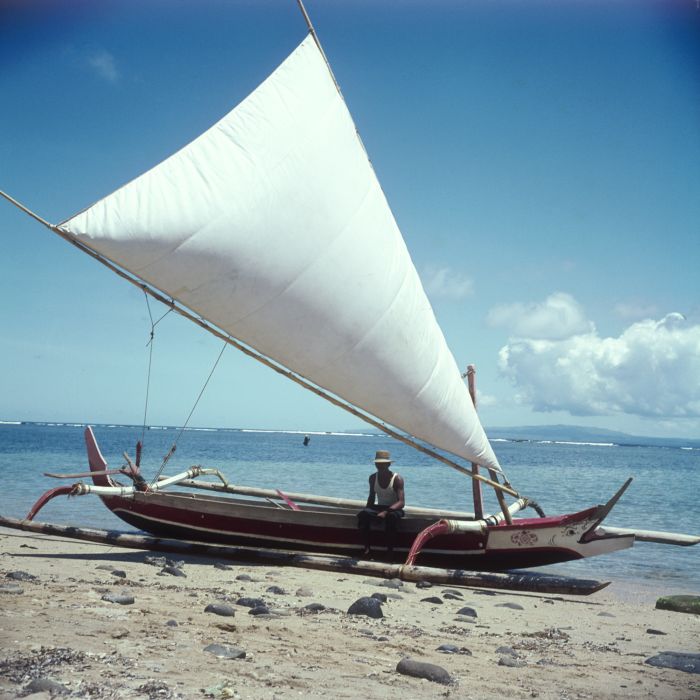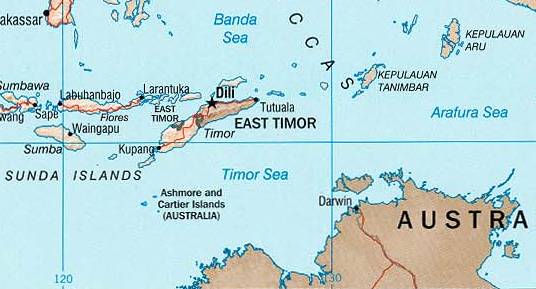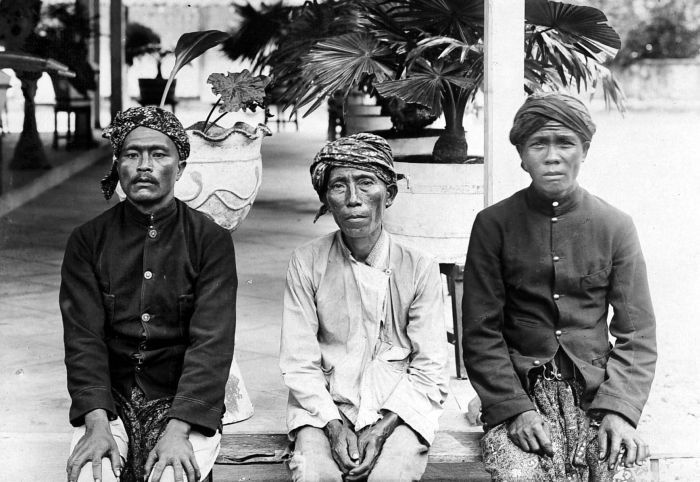|
Jukung
A jukung or kano, also known as cadik is a small wooden Indonesian outrigger canoe. It is a traditional fishing boat, but newer uses include "Jukung Dives", using the boat as a vehicle for small groups of SCUBA divers. The double outrigger jukung is but one of many types of Austronesian outrigger canoes that use the crab claw sail traditional throughout Polynesia. Whilst this sail presents some difficulties in tacking into the wind, actually requiring to jibe around, a jukung is superb in its reaching ability and jibe-safe running. They are usually highly decorated and bear a marlin-like prow. People in Kalimantan also named their boat Jukung. It is used for transport in daily activities such as going to the office, to school, or shopping in pasar terapung (The Floating Market, a very famous tourist attraction). Currently there is a modern version of jukung made from High Density Polyethylene (HDPE) pipe in Indonesia. Advertised as unsinkable, the main body is made of a closed ... [...More Info...] [...Related Items...] OR: [Wikipedia] [Google] [Baidu] |
Timor Sea
The Timor Sea (, , or ) is a relatively shallow sea in the Indian Ocean bounded to the north by the island of Timor with Timor-Leste to the north, Indonesia to the northwest, Arafura Sea to the east, and to the south by Australia. The Sunda Trench marks the deepest point of the Timor Sea with a depth of more than 3300 metres, separating the continents of Oceania in the southeast and Asia to the northwest and north. The Timor sea is prone to earthquakes and tsunamis north of the Sunda Trench, due to its location on the Ring of Fire as well as volcanic activity and can experience major cyclones, due to the proximity from the Equator. The sea contains a number of reefs, uninhabited islands and significant hydrocarbon reserves. International disputes emerged after the reserves were discovered resulting in the signing of the Timor Sea Treaty. The Timor Sea was hit by the worst Montara oil spill, oil spill for 25 years in 2009. It is possible that Australia's first inhabitants cros ... [...More Info...] [...Related Items...] OR: [Wikipedia] [Google] [Baidu] |
Mayang (boat)
Perahu Mayang or simply mayang is a type of fishing boat from Java, Indonesia. This type of boat is used mainly for fishing and trading. Historically, this indigenous vessel is also favored by European skippers and private merchants for trading in East Indies: 50% of them were using mayang and pencalang. It is mostly used in northern coast of Java. The major production site is in Rembang Regency, Rembang, Central Java. Etymology The name mayang comes from ''payang'' (a type of Seine fishing, seine) used by local fishermen. Thus the name can be translated as "using ''payang''". Description Major portion of the mayang hull is built using Teak, teak wood. The hull shape is broad, flat-bottomed with a pronounced bow and stern. It is deckless, but may have a covered "house" in the middle of the boat. Mayang are also built with a watertight bulkhead. In the 18th century, a Mayang is described as having a crew of 6 or 9 and is 12.2 to 15 metres long; with a 7.24 tonne burthen. A boat fro ... [...More Info...] [...Related Items...] OR: [Wikipedia] [Google] [Baidu] |
Outrigger Canoe
Outrigger boats are various watercraft featuring one or more lateral support floats known as outriggers, which are fastened to one or both sides of the main hull (watercraft), hull. They can range from small dugout (boat), dugout canoes to large plank-built vessels. Outrigger boats can also vary in their configuration, from the ancestral double-hull configuration (catamarans), to single-outrigger vessels prevalent in the Pacific Islands and Madagascar, to the double-outrigger vessels (trimarans) prevalent in Maritime Southeast Asia, Island Southeast Asia. They are traditionally fitted with Austronesian sails, like the crab claw sails and tanja sails, but in modern times are often fitted with petrol engines. Unlike a single-hulled vessel, an outrigger or double-hull vessel generates stability as a result of the distance between its hulls rather than due to the shape of each individual hull. As such, the hulls of outrigger or double-hull boats are typically longer, narrower and mo ... [...More Info...] [...Related Items...] OR: [Wikipedia] [Google] [Baidu] |
Vinta
The vinta is a traditional outrigger boat from the Philippine island of Mindanao. The boats are made by Sama-Bajau, Tausug and Yakan peoples living in the Sulu Archipelago, Zamboanga peninsula, and southern Mindanao. It is also made by the Sama-Bajau that lived in east coast of Sabah, Malaysia. Vinta are characterized by their colorful rectangular lug sails (''bukay'') and bifurcated prows and sterns, which resemble the gaping mouth of a crocodile. Vinta are used as fishing vessels, cargo ships, and houseboats. Smaller undecorated versions of the vinta used for fishing and transportation are known as tondaan and bogo-lamak. The name "vinta" is predominantly used in Zamboanga, Basilan, and other parts of mainland Mindanao. It is also known as pilang or pelang among the Sama-Bajau of the Tawi-Tawi islands; dapang or depang among the Tausug in Sulu; balanda or binta among the Yakan in Basilan; and bogo-lamak among the Sama-Bajau in the east coast of Sabah. It can also ... [...More Info...] [...Related Items...] OR: [Wikipedia] [Google] [Baidu] |
Balinese Jukung
Balinese may refer to: *Bali, an Indonesian island *Balinese art *Balinese dance *Balinese people *Balinese language *Nusa Penida Balinese * Bali Aga Balinese **Balinese script **Balinese (Unicode block) *Balinese mythology *Balinese cat, a cat breed *Balinese Gamelan, local music * Balinese Room, a famous illegal casino in Galveston, Texas *"Balinese", a song by ZZ Top from their 1975 album, ''Fandango! ''Fandango!'' is the fourth album by the American rock band ZZ Top, released in 1975. The album's first side consists of selections from live shows, with the second side being new studio recordings. A remastered and expanded edition of this ...'' See also * Bali (other) {{disambiguation Language and nationality disambiguation pages ... [...More Info...] [...Related Items...] OR: [Wikipedia] [Google] [Baidu] |
Madurese People
Madurese people ('' mUH-dOO-rUH''; ; ) are one of the Austronesian-speaking ethnic group native to the Indonesian island of Madura in the Java Sea, off the northeastern coast of Java. They speak their own native Madurese (with diverse varieties), sharing a common history, traditions, and cultural identity. Nationwide, the Madurese are the third-largest ethnic group in Indonesia, and one of the well-known Indonesian national dishes, Satay, is attributed to the Madurese as part of their culinary heritage. About six million native Madurese are living on their ancestral land, Madura Island, and around half a million reside in eastern Java, mainly in the regencies of Jember, Banyuwangi, and others. The Madurese population in Java forms a subgroup called the Pandalungan Madurese, who speak a blend of Javanese and Madurese. The Madurese are not only known as the inventors of satay but also as the creators of the Karapan sapi bull race. The group have historically been pioneers of ... [...More Info...] [...Related Items...] OR: [Wikipedia] [Google] [Baidu] |
Penjajap
Penjajap, also pangajava and pangayaw, were native galley-like warships used by several Austronesian ethnic groups in maritime Southeast Asia. They were typically very long and narrow, and were very fast. They are mentioned as being used by native fleets in Indonesia, the southern Philippines, Malaysia, and Brunei. Names and etymology The original name for the ships among the natives of the Maluku Islands, eastern Sabah, western Mindanao, and the Sulu Archipelago is ''pangayaw'' or ''mangayaw'' (literally meaning "raider"). This was transcribed in European sources (chiefly Dutch and Portuguese) variously as ''pangaio'', ''pangaia'', ''panguaye'', ''pangajao'', ''pangajaua'', ''pangajava'', ''penjajab'', ''penjajap'', ''pindjajap,'' ''penjelajah'', and ''pangara''. The British East India Company explorer Thomas Forrest also records that the Iranun called them ''mangaio''. The terms (particularly ''pangaio'') were also later borrowed and used generically for any native wooden sa ... [...More Info...] [...Related Items...] OR: [Wikipedia] [Google] [Baidu] |
Lancaran (ship)
A lancaran or lanchara is a type of sailing ship used in Maritime Southeast Asia. Although similar in shape to Mediterranean galleys, the lancaran was the backbone of the regional fleet of the western half of Nusantara before Mediterranean influence came. For their war fleet, the Malays prefer to use shallow draught, oared longships similar to the galley, such as lancaran, penjajap, and kelulus. This is very different from the Javanese who prefer long-range, deep-draught round ships such as jong and malangbang. The reason for this difference is that the Malays operated their ships in riverine water, sheltered straits zone, and archipelagic environment, while the Javanese are often active in the open and high sea. After contact with Iberian people, both the Javanese and Malay fleets began to use the ghurab and ghali more frequently.Manguin, Pierre-Yves (2012). Lancaran, Ghurab and Ghali: Mediterranean impact on war vessels in Early Modern Southeast Asia. In G. Wade & L. Tana ... [...More Info...] [...Related Items...] OR: [Wikipedia] [Google] [Baidu] |
Kakap (boat)
A kakap is a narrow river or coastal boat used for fishing in Malaysia, Indonesia, and Brunei. They are also sometimes used as auxiliary vessels to larger warships for piracy and coastal raids. Etymology The name "''kakap''" comes from Malay word meaning "spy", "scout", "lookout". Thus, the name means "type of boat used for scouting". Description Kakap resemble pangajava but are smaller and lighter. It also uses a mast and rectangular ''tanja'' sail. The boards and planks on the hull are not nailed with iron nail, but are attached using a wooden dowel technique and reinforced with rattan bonds. Larger kakaps may reach eight meters in length and able to carry 8–10 crews. The kakap jeram's hull is planked and built with frames, made by ''meranti'' (dipterocarp) wood. It has carved figurehead and ornamented sternpost. A washstrake made of bamboo splits sewn together with bamboo withies, and held in position by lashings. A heavy beam is fitted forward and used for winding the ... [...More Info...] [...Related Items...] OR: [Wikipedia] [Google] [Baidu] |
Timor
Timor (, , ) is an island at the southern end of Maritime Southeast Asia, in the north of the Timor Sea. The island is Indonesia–Timor-Leste border, divided between the sovereign states of Timor-Leste in the eastern part and Indonesia in the western part. The Indonesian part, known as West Timor, constitutes part of the Provinces of Indonesia, province of East Nusa Tenggara. Within West Timor lies an exclave of Timor-Leste called Oecusse District. The island covers an area of . The name is a variant of ''timur'', Malay language, Malay for "east"; it is so called because it lies at the eastern end of the Lesser Sunda Islands. Mainland Australia is less than 500 km away, separated by the Timor Sea. Language, ethnic groups and religion Anthropologists identify eleven distinct Ethnolinguistic group, ethno-linguistic groups in Timor. The largest are the Atoni of western Timor and the Tetum language, Tetum of central and eastern Timor. Most indigenous Timorese languages ... [...More Info...] [...Related Items...] OR: [Wikipedia] [Google] [Baidu] |
Tiwi Islands
The Tiwi Islands ( meaning "two islands") are part of the Northern Territory, Australia, to the north of Darwin, Northern Territory, Darwin adjoining the Timor Sea. They comprise Melville Island, Northern Territory, Melville Island, Bathurst Island, Northern Territory, Bathurst Island, and nine smaller uninhabited islands, with a combined area of . Inhabited before European settlement by the Tiwi people, Tiwi, an Aboriginal Australian people, the islands' population was 2,348 at the . The Tiwi Land Council is one of four land councils in the Northern Territory. It is a representative body with statutory authority under the ''Aboriginal Land Rights Act, Aboriginal Land Rights (Northern Territory) Act 1976'', and has responsibilities under the ''Native Title Act 1993'' and the ''Pastoral Land Act 1992''. Geography and population The Tiwi Islands were created by sea level rise at the end of the Last Glacial Period, last ice age, which finished about 11,700 years ago, with the ... [...More Info...] [...Related Items...] OR: [Wikipedia] [Google] [Baidu] |
Arafura Sea
The Arafura Sea (or Arafuru Sea) lies west of the Pacific Ocean, overlying the continental shelf between Australia and Western New Guinea (also called Papua), which is the Indonesian part of the Island of New Guinea. Geography The Arafura Sea is bordered by the Gulf of Carpentaria and the continent of Australia to the south, the Timor Sea to the west, the Banda and Seram seas to the northwest, and the Torres Strait to the east. (Just across the strait, farther to the east, lies the Coral Sea). The Arafura Sea is long and wide. The depth of the sea is in most places, with the depth increasing to the west. The sea lies over the Arafura Shelf, which is a section of the Sahul Shelf. When sea levels were low during the last glacial maximum, the Arafura Shelf, the Gulf of Carpentaria and the Torres Strait formed a large, flat, land bridge that connected Australia and New Guinea and eased the migration of humans from Asia into Australia. The combined landmass formed the continent of ... [...More Info...] [...Related Items...] OR: [Wikipedia] [Google] [Baidu] |









